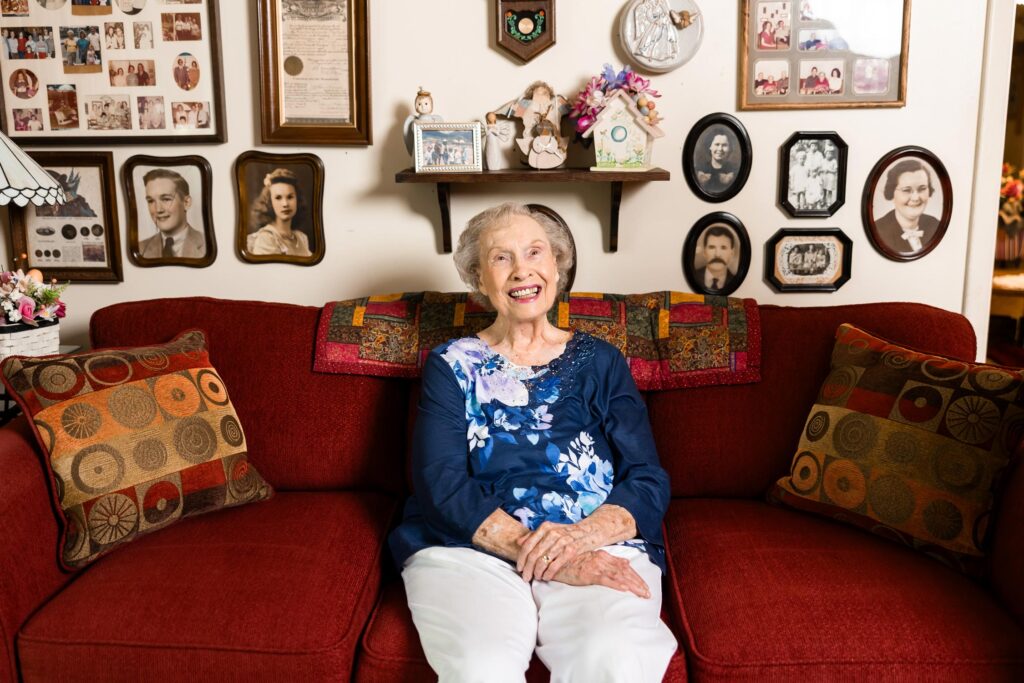If you’re caring for an aging parent, you’ve likely worried: “Are they eating right?” Nutrition affects their health, energy, and mood, but getting regular, healthy meals isn’t always easy. That’s where elder nutrition programs come in. From home delivery to meal sites, there are real options. Let’s cover what’s available and how CareLink can guide you to the right support.
Key Takeaways:
- Main Nutrition Programs: Older Americans Act (OAA), Commodity Supplemental Food Program (CSFP), and Senior Farmers' Market Nutrition Program (SFMNP).
- Eligibility: Seniors 60+, especially low-income, homebound, or with disabilities; some programs also help those living with qualified seniors.
- Meal Types: OAA provides congregate (community dining) and home-delivered meals; CSFP gives monthly food boxes.
- Nutritional Needs: Seniors need more protein, calcium, fiber, less salt/sugar, and steady hydration.
- Benefits: Programs support well-being, reduce loneliness, and help seniors stay at home.
- Access Points: Community centers, Aging Agencies, and online tools (e.g., Meals on Wheels locator).
- Cultural Gaps: Meals often lack variety; higher costs and language gaps limit access.
- Health Connection: Food insecurity raises hospital risk and early death; early screening can help.

A Comprehensive Guide to Elder Nutrition Programs and How They Support Aging Adults
As the population ages, access to consistent, healthy food becomes even more important. This is where elder nutrition programs come in. These services provide older adults with the nourishment they need to live healthier, more independent lives. Whether delivered to the home or served in a community setting, these programs reduce food insecurity, support health, and create essential social connections.
Let’s explore some of the most effective elder meal services available today. First, we will look into how they work. Next, we'll identify who qualifies for these programs. Furthermore, we will explore how they can be improved to better serve every aging adult, regardless of culture, background, or income.
Elder Nutrition Programs Provide Vital Support for Aging Adults
Across the U.S., several core programs offer nutrition assistance for older adults. The most well-known include:
- Older Americans Act (OAA) Nutrition Services
- Meals on Wheels
- Commodity Supplemental Food Program (CSFP)
These programs serve millions of seniors each year. While each operates differently, they all aim to promote health, reduce hunger, and help older adults age in place.
To begin with, the OAA Nutrition Services Program, established in 1965, funds both congregate meals (served in group settings) and home-delivered meals for people aged 60+. These meals often provide 40% of daily nutritional needs and follow strict standards for protein, fiber, and key vitamins.
Next, Meals on Wheels delivers hot, ready-to-eat meals directly to seniors who are homebound. Volunteers and staff often check in during delivery, offering both food and a friendly face, sometimes the only visitor that day.
Finally, the Commodity Supplemental Food Program (CSFP) provides monthly food boxes with nonperishable items like canned meats, cheese, grains, and juice. These help stretch tight food budgets, especially for low-income seniors.
Congregate Meal Sites Offer Food and Community
One key component of elder nutrition programs is the congregate meal. Notably, these meals are served at community centers, senior centers, or churches, where they offer older adults a warm, healthy meal in a social setting. Beyond nourishment, moreover, these meals significantly reduce isolation and support mental health. Many sites also offer games, group activities, or fitness classes after lunch.
Programs like CareLink’s Senior Centers provide these services across central Arkansas, giving seniors a place to connect and thrive.
Home-Delivered Meals Offer Safety and Independence
For those who cannot travel or cook, home-delivered meals are indeed a lifeline. Programs like Meals on Wheels ensure that seniors receive the food they need without ever leaving home. These meals are more than just nourishment; in fact, they’re a source of safety, companionship, and peace of mind.
Moreover, seniors aged 60+ who are homebound or face mobility challenges often find themselves eligible. Interestingly, in many areas, no income proof is required—just a brief conversation or visit suffices.
The Commodity Supplemental Food Program Adds Monthly Grocery Support
While OAA and Meals on Wheels provide prepared meals, CSFP offers grocery boxes filled with pantry staples. These include:
- Canned fruit and vegetables
- Rice, pasta, and cereal
- Shelf-stable milk
- Peanut butter and cheese
Though CSFP doesn’t include cooked meals, it helps older adults cook at home and extend their food supply. Many seniors use both CSFP and OAA services together for maximum benefit.
To check eligibility, visit USDA CSFP.
Eligibility for Elder Nutrition Programs Is Broad and Flexible
If you're wondering who qualifies for these programs, the good news is that many older adults do. Typically, eligibility includes:
- First and foremost, being 60 years or older
- Additionally, having a limited income or disability
- Finally, being homebound or unable to prepare meals independently
Some programs, like SNAP, require more documentation. SNAP can also connect seniors to CSFP and other food aid. Seniors living with eligible individuals may also qualify, even if under age 60.
For those unsure where to begin, CareLink’s Contact Page is a great place to start.
Nutritional Needs of Older Adults Require Special Attention
As we age, our nutritional needs change. Fortunately, elder nutrition programs take this into account by ensuring meals are rich in essential nutrients. Firstly, they include protein to reduce muscle loss. Additionally, calcium and Vitamin D are provided for bone strength. Moreover, fiber is included to support digestion. Finally, maintaining proper hydration helps prevent confusion and fatigue.
Furthermore, seniors often need to limit salt, sugar, and saturated fats. Meals that meet these needs effectively help manage chronic conditions like diabetes and hypertension.
Explore more on nutrition for older adults at Nutrition.gov.
Affordable Meal Options Help Low-Income Seniors Thrive
For seniors living on limited incomes, food programs can indeed mean the difference between eating and skipping meals. Fortunately, there are several programs that offer free or low-cost meals, including:
- Senior Farmers’ Market Nutrition Program (SFMNP): This program provides farmers market vouchers for fresh produce, helping seniors access nutritious options.
- Food Pantries: In addition, many pantries offer “senior boxes” tailored specifically to older adults' needs.
- Meals on Wheels: Moreover, this service offers delivery with options for donations or sliding scale costs, making it accessible to more individuals.
Meal Delivery Promotes Health, Connection, and Peace of Mind
The benefits of elder nutrition programs extend far beyond food. Indeed, regular meals:
- Improve physical health and reduce hospital visits.
- Support mental wellness through regular check-ins.
- Provide safety for homebound individuals.
- Ease stress for caregivers.
Each visit from a meal provider can serve as a wellness check, a friendly conversation, and, importantly, a reassurance that someone cares.
Programs Must Address Cultural and Dietary Needs
While elder nutrition programs excel in many areas, challenges remain, especially in serving diverse populations. Many older adults from non-Western backgrounds find that meals don’t reflect their cultural preferences or dietary needs.
Barriers include:
- Limited halal, kosher, or vegetarian options
- Language barriers in outreach and paperwork
- Staff unfamiliar with cultural food norms
- Rigid menus that can’t be adjusted
Community Meal Programs Offer More Than Nutrition
Some of the most impactful elder nutrition programs are those that combine food with social support. These include:
- Congregate Dining Programs: Group meals served at community centers.
- Adult Day Care Centers (ADCs): Serve meals, provide healthcare, and offer safe daytime care.
- Full-Service Models: Include transportation, health checks, and wellness services alongside meals.
These programs reduce loneliness, connect older adults to local resources, and allow them to remain active in their communities.
Food Security Is Key to Healthy Aging
Food insecurity among seniors is a growing concern. Nearly 9 million older adults in the U.S. face uncertain access to food. This affects:
- Cognitive health: Malnutrition can cause confusion or memory loss.
- Physical health: Weakness from undernourishment leads to falls and hospital visits.
- Emotional well-being: Skipping meals due to cost can lead to isolation or depression.
A program like the OAA Nutrition Services Program helps combat these issues daily.
Meals Should Reflect Health, Culture, and Dignity
When meals align with a person’s needs, culture, and preferences, the benefits multiply. Seniors are more likely to eat, stay healthy, and feel respected. Programs must continue evolving to meet the needs of today’s diverse aging population.
That means offering:
- Choice in menus
- Meals for special diets
- Staff training in cultural sensitivity
- Easier access and less paperwork
Food is more than fuel—it’s a form of care. Each meal served is an act of dignity and support.
Discover Elder Nutrition Support Through CareLink
CareLink Can Help You Access the Meals You Deserve
Nutritious meals should be a daily guarantee, not a question. If you or a loved one needs help with meal delivery, grocery assistance, or food-related support, CareLink is ready to assist. Their team can help you understand your options and connect you to the right resources. Contact CareLink today to get started with elder nutrition programs that meet your needs.
When older adults eat well, they live well. Elder nutrition programs ensure that meals are not just available, but also nourishing, culturally appropriate, and delivered with care. With continued support and improvement, these programs can reach more people, promote independence, and improve the quality of life for aging adults across the country. Let’s build a future where every senior has a seat at the table.





